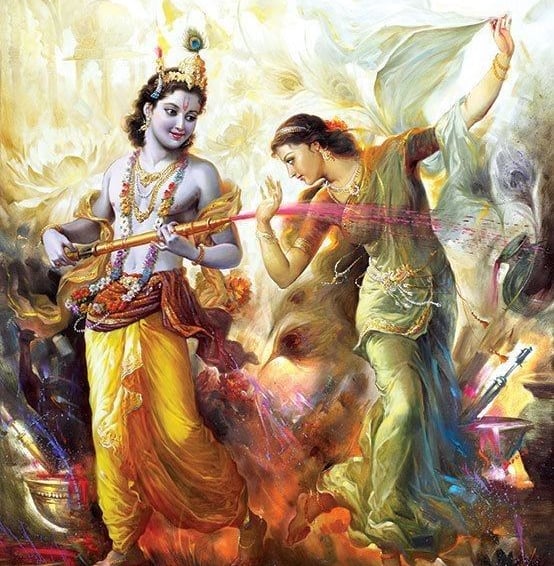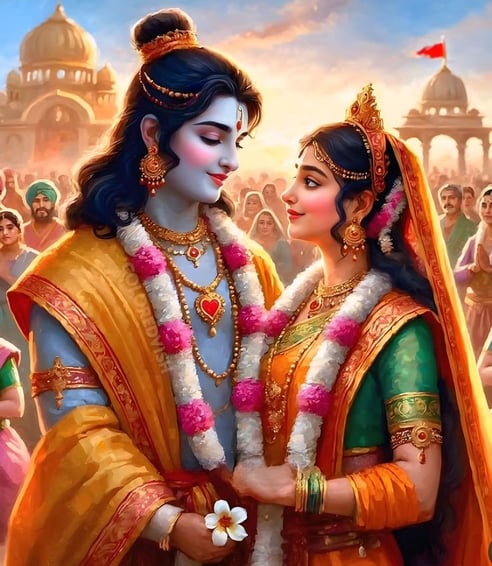



Krishna's Events
COME CELEBRATE THE LORD KRISHNA
Krishna and Radha’s Playful Holi – Lord Krishna, known for his mischievous nature, started the tradition of playing Holi with colors. Since he had a dark complexion, he playfully smeared colors on Radha and the Gopis, making the festival a joyful expression of love.
Vrindavan and Barsana Lathmar Holi – In Barsana, Radha’s village, a special Lathmar Holi is played where women playfully chase men with sticks, reenacting the fun-filled interactions between Krishna and the Gopis.
Symbol of Divine Love and Unity – Krishna’s Holi signifies the bond of love, joy, and devotion. Devotees celebrate by chanting Krishna’s names, dancing, and throwing colors, symbolizing the oneness of all beings in his divine play (Leela).
Bhakti and Devotional Holi – Many temples, especially Banke Bihari Temple in Vrindavan, celebrate Holi with flower petals and gulal (colored powder), accompanied by soulful bhajans and kirtans glorifying Krishna.
Victory of Good Over Evil – Holi also marks the triumph of devotion (Bhakti) over ego and negativity, remembering the story of Prahlad and Holika, with Krishna as the ultimate protector of his devotees.
RAM NAVAMI
Birth of Lord Rama – Ram Navami marks the appearance day of Lord Shri Ram, the seventh incarnation of Lord Vishnu, who was born in Ayodhya to King Dasharatha and Queen Kaushalya.
Symbol of Dharma and Virtue – Lord Rama is the ideal king (Maryada Purushottam), known for his righteousness, truthfulness, and devotion to dharma. His life, as described in the Ramayana, teaches moral values and the importance of duty.
Victory of Good Over Evil – Ram Navami reminds us of Rama’s triumph over the demon king Ravana, symbolizing the defeat of evil and the power of truth and righteousness.
Spiritual and Temple Celebrations – Devotees celebrate by fasting, reciting the Ramayana, chanting Rama’s name (Ram Naam), and visiting temples. Grand processions with Lord Rama’s idols are taken out in many places.
Sita-Rama Divine Love – Ram Navami also highlights the divine relationship between Lord Rama and Goddess Sita, portraying ideal love, devotion, and sacrifice in a marital bond.
